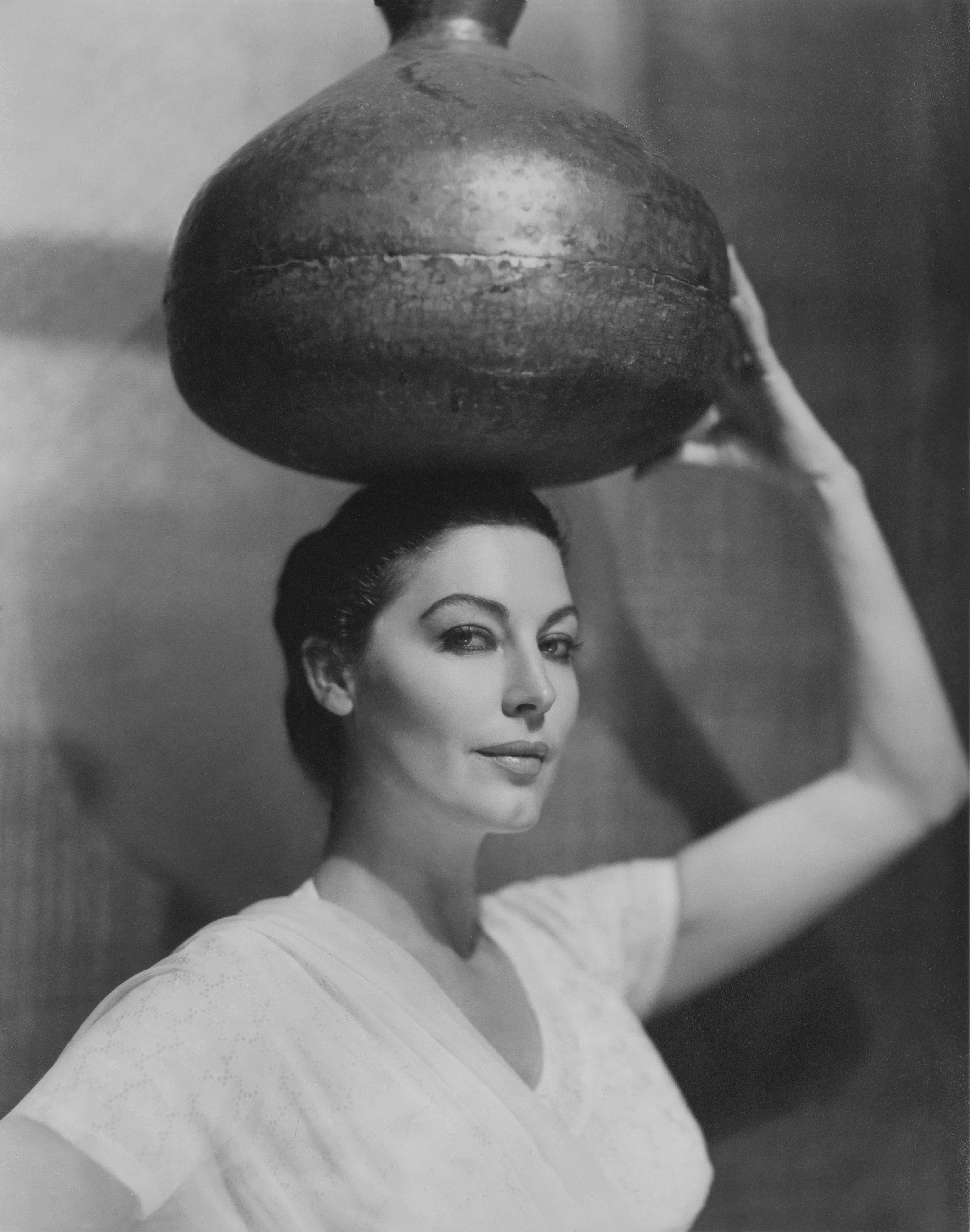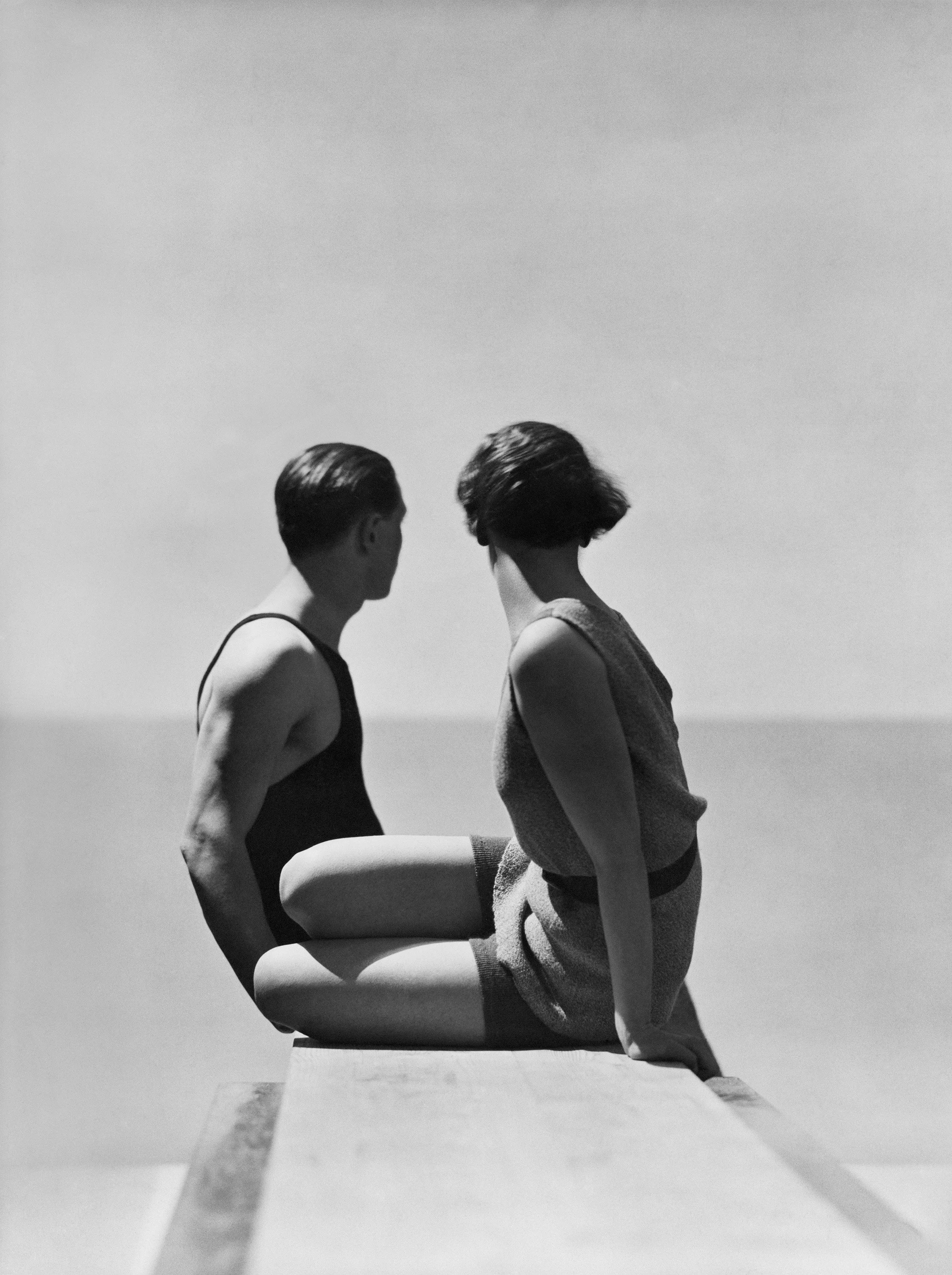Museo di Roma a Palazzo Braschi | Roma
25. Juni – 19. Oktober 2025
George Hoyningen-Huene. Art.Fashion.Cinema
Ava Gardner 1965 © George Hoyningen-Huene Estate Archives
Ein Pionier der Modefotografie zwischen Pariser Haute Couture, Hollywood-Glamour und surrealistischen Visionen: Die Ausstellung "George Hoyningen-Huene. Art.Fashion.Cinema" im Museo di Roma zeigt über 100 Werke eines Meisters der Bildkomposition, der Fotografie in Licht gemeisselt hat.
Die von Susanna Brown kuratierte Schau widmet sich einem der innovativsten Fotografen des 20. Jahrhunderts. George Hoyningen-Huene (1900–1968) war nicht nur langjähriger Cheffotograf der französischen "Vogue", sondern prägte mit seinem bildnerischen Ansatz auch die visuelle Sprache von "Harper’s Bazaar". Seine Arbeiten oszillieren zwischen klassischer Strenge und surrealem Experiment – elegant, präzise, vielschichtig.
In zehn thematischen Kapiteln erschliesst sich Hoyningen-Huenes fotografische Welt. Sie beginnt in den Pariser Jahren, wo er Teil des avantgardistischen Milieus um Man Ray, Dalí und Lee Miller war. Seine Aufnahmen aus dieser Zeit – etwa von Josephine Baker oder den Ballets Russes – reflektieren das kulturelle Vibrieren der 1920er-Jahre.
Ein Schwerpunkt liegt auf der Modefotografie: Ob Chanel, Schiaparelli oder Cartier – Huene inszenierte Kleidung als Skulptur, Körper als Träger idealisierter Schönheit. Legendär ist das Bild "Divers" mit Horst P. Horst und Lee Miller – ein stilles Manifest moderner Ästhetik.
Weitere Sektionen widmen sich seinem Interesse für klassische Proportionen, seinem experimentellen Umgang mit Licht, Reisen durch Nordafrika und Griechenland, sowie der Entwicklung des männlichen Akts als Lichtskulptur. Besonders eindrücklich: das Porträt Jean Cocteaus und die poetische Zusammenarbeit mit Lee Miller, die später als Kriegsreporterin eigene fotografische Massstäbe setzte.
Mit dem Wechsel nach Hollywood ab 1936 porträtiert Huene Filmgrössen wie Greta Garbo oder Ava Gardner. Gleichzeitig arbeitet er als Farbberater für George Cukor – eine Freundschaft, die in privater wie künstlerischer Hinsicht prägend war. Auch Sophia Loren schätzte seinen Blick: "Ich hoffe, du wirst bald meinen Film sehen", schrieb sie ihm 1961, "und ich würde mich sehr über deine persönliche Meinung freuen."
Die Ausstellung endet mit einem Blick auf sein filmisches Schaffen sowie auf die späte Rezeption seines Werkes. Der Nachlass, heute in Stockholm beheimatet, wird erstmals in Rom umfassend präsentiert.
Toto Koopman, Evening dress by Augustabernard 1934 © George Hoyningen-Huene Estate Archives
Un pionnier de la photographie de mode entre haute couture parisienne, glamour hollywoodien et visions surréalistes : l'exposition « George Hoyningen-Huene. Art.Fashion.Cinema » au Museo di Roma présente plus de 100 œuvres d'un maître de la composition picturale qui a sculpté la photographie dans la lumière.
Commissariat de Susanna Brown, l'exposition est consacrée à l'un des photographes les plus innovants du XXe siècle. George Hoyningen-Huene (1900-1968) a non seulement été pendant de nombreuses années photographe en chef du magazine français « Vogue », mais il a également marqué de son empreinte le langage visuel de « Harper's Bazaar » grâce à son approche picturale. Ses œuvres oscillent entre rigueur classique et expérimentation surréaliste – élégantes, précises, complexes.
L'univers photographique de Hoyningen-Huene se dévoile en dix chapitres thématiques. Il commence dans les années parisiennes, où il faisait partie du milieu avant-gardiste autour de Man Ray, Dalí et Lee Miller. Ses clichés de cette époque, notamment ceux de Josephine Baker ou des Ballets russes, reflètent l'effervescence culturelle des années 1920.
La photographie de mode occupe une place centrale : qu'il s'agisse de Chanel, Schiaparelli ou Cartier, Huene met en scène les vêtements comme des sculptures et les corps comme des supports d'une beauté idéalisée. Le visuel « Divers » avec Horst P. Horst et Lee Miller est légendaire – un manifeste silencieux de l'esthétique moderne.
D'autres sections sont consacrées à son intérêt pour les proportions classiques, son utilisation expérimentale de la lumière, ses voyages en Afrique du Nord et en Grèce, ainsi que le développement du nu masculin comme sculpture lumineuse. Particulièrement impressionnants : le portrait de Jean Cocteau et la collaboration poétique avec Lee Miller, qui a ensuite établi ses propres normes photographiques en tant que reporter de guerre.
Après son arrivée à Hollywood en 1936, Huene a réalisé les portraits de grandes stars de cinéma telles que Greta Garbo ou Ava Gardner. Parallèlement, il a travaillé comme conseiller en couleurs pour George Cukor, une amitié qui a été déterminante tant sur le plan privé qu'artistique. Sophia Loren appréciait également son regard : « J'espère que vous verrez bientôt mon film », lui écrivait-elle en 1961, « et je serais très heureuse d'avoir votre avis personnel ».
L'exposition se termine par un aperçu de son œuvre cinématographique et de la réception tardive de son travail. La succession, aujourd'hui conservée à Stockholm, est présentée pour la première fois dans son intégralité à Rome.
Divers, Horst and Lee miller, Paris 1930 © George Hoyningen-Huene Estate Archives
Un pioniere della fotografia di moda tra l'alta moda parigina, il glamour hollywoodiano e le visioni surrealiste: la mostra “George Hoyningen-Huene. Art.Fashion.Cinema” al Museo di Roma presenta oltre 100 opere di un maestro della composizione fotografica che ha scolpito la fotografia nella luce.
La mostra, curata da Susanna Brown, è dedicata a uno dei fotografi più innovativi del XX secolo. George Hoyningen-Huene (1900-1968) non è stato solo per molti anni capo fotografo della rivista francese “Vogue”, ma ha anche influenzato il linguaggio visivo di “Harper's Bazaar” con il suo approccio pittorico. Le sue opere oscillano tra rigore classico e sperimentazione surreale: eleganti, precise, complesse.
Il mondo fotografico di Hoyningen-Huene si svela in dieci capitoli tematici. Inizia negli anni parigini, dove faceva parte dell'ambiente d'avanguardia che gravitava attorno a Man Ray, Dalí e Lee Miller. Le sue fotografie di quel periodo, ad esempio quelle di Josephine Baker o dei Ballets Russes, riflettono il fermento culturale degli anni Venti.
Un punto centrale è la fotografia di moda: che si tratti di Chanel, Schiaparelli o Cartier, Huene metteva in scena gli abiti come sculture e i corpi come veicoli di una bellezza idealizzata. Leggendaria è l'immagine “Divers” con Horst P. Horst e Lee Miller, un manifesto silenzioso dell'estetica moderna.
Altre sezioni sono dedicate al suo interesse per le proporzioni classiche, al suo uso sperimentale della luce, ai viaggi in Nord Africa e Grecia, nonché allo sviluppo del nudo maschile come scultura di luce. Particolarmente impressionanti sono il ritratto di Jean Cocteau e la poetica collaborazione con Lee Miller, che in seguito stabilì i propri standard fotografici come reporter di guerra.
Con il trasferimento a Hollywood nel 1936, Huene ritrasse grandi star del cinema come Greta Garbo e Ava Gardner. Allo stesso tempo lavorò come consulente di colore per George Cukor, un'amicizia che fu determinante sia dal punto di vista privato che artistico. Anche Sophia Loren apprezzava il suo occhio: «Spero che vedrai presto il mio film», gli scrisse nel 1961, «e mi farebbe molto piacere conoscere la tua opinione personale».
La mostra si conclude con uno sguardo alla sua produzione cinematografica e alla tardiva ricezione della sua opera. Il lascito, oggi conservato a Stoccolma, viene presentato per la prima volta in modo completo a Roma.
Reflections ... Miss Hubbell 1930 © George Hoyningen-Huene Estate Archives
A pioneer of fashion photography between Parisian haute couture, Hollywood glamour and surrealist visions: the exhibition ‘George Hoyningen-Huene. Art.Fashion.Cinema’ at the Museo di Roma showcases over 100 works by a master of image composition who carved photography in light.
Curated by Susanna Brown, the show is dedicated to one of the most innovative photographers of the 20th century. George Hoyningen-Huene (1900–1968) was not only the long-time chief photographer of French Vogue, but also shaped the visual language of Harper's Bazaar with his pictorial approach. His works oscillate between classical rigour and surreal experimentation – elegant, precise, multi-layered.
Hoyningen-Huene's photographic world is revealed in ten thematic chapters. It begins in his Paris years, where he was part of the avant-garde milieu surrounding Man Ray, Dalí and Lee Miller. His photographs from this period – of Josephine Baker and the Ballets Russes, for example – reflect the cultural vibrancy of the 1920s.
One focus is on fashion photography: whether Chanel, Schiaparelli or Cartier, Huene staged clothing as sculpture and bodies as vehicles of idealised beauty. The visual ‘Divers’ with Horst P. Horst and Lee Miller is legendary – a silent manifesto of modern aesthetics.
Other sections are devoted to his interest in classical proportions, his experimental use of light, his travels through North Africa and Greece, and the development of the male nude as a light sculpture. Particularly impressive are the portrait of Jean Cocteau and the poetic collaboration with Lee Miller, who later set her own photographic standards as a war reporter.
With his move to Hollywood in 1936, Huene portrayed film stars such as Greta Garbo and Ava Gardner. At the same time, he worked as a colour consultant for George Cukor – a friendship that was formative in both a private and artistic sense. Sophia Loren also appreciated his eye: ‘I hope you will see my film soon,’ she wrote to him in 1961, ‘and I would be delighted to hear your personal opinion.’
The exhibition ends with a look at his cinematic work and the late reception of his oeuvre. The estate, now based in Stockholm, is being presented comprehensively in Rome for the first time.




